Lithuania’s Last Jewish Fort
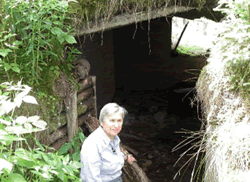
http://www.holocaustinthebaltics.com/388223.html
Fania Yocheles Brantsovsky, born in 1922, who lost her entire family in the Holocaust, escaped the Vilna Ghetto about one hour before its liquidation got underway on 23 September 1943. Together with Dobke Develtov (now of Los Angeles), she made it to the underground anti-Nazi partisan fort that was home to around 100 fighters aligned with the Soviet partisans. Most were fellow Jewish escapees from the Vilna Ghetto. An underground bunker like this was their home until the fall of Nazi fascist rule in July 1944.
Along with other Holocaust Survivors who resisted — including Yitzhak Arad and Rachel Margolis — Ms Brantsovsky, librarian of the Vilnius Yiddish Institute, has in recent years been the object of a vicious campaign of defamation and harassment. The antisemitic press has targeted her (January 2008), armed police came to search for her (May 2008), prosecutors told the press she could not be found (May 2008), the editor of Lithuania's main news portal calls for her to be tried (May 2009), and the mainstream media, citing ruling-party members of Lithuania's parliament, brands her a war criminal (Oct 2009), all in the absence of any charge or iota of evidence. In the opinion of this website, the entire charade is a ruse of the red-brown movement and its local and powerful Double Genocide Industry. This is the part of the effort to rewrite history that specializes in generating bogus paper trails of ‘equal investigation’ of perpetrators and victims in order to obfuscate the Holocaust. In the meantime, representatives of the free world, from western ambassadors to Lithuania to the president of Germany have honored Ms Brantsovsky as a hero of the Jewish resistance against Nazism (see: Responses).
While relics of the anti-Soviet struggle are (rightly) preserved in the Baltics, historic monuments celebrating the inspiring courage and heroism of the anti-Nazi resistance are being allowed (and ‘encouraged’) to rot into the earth. One of them is this fort, where Fania and some hundred Vilna Ghetto survivors lived, and which they used as their base during the fight against the awesome power of the Nazi army and its multitudinous local partners. Images (by Adalbert Wagner) available here. Video clips (by Jordan Kutzik) of Fania at the fort with 2008 Yiddish summer course participants here.
In the summer of 2008, a group of NATO ambassadors arranged to visit the fort formally, but the plan was thwarted by a protest from the Lithuanian Foreign Ministry. Groups of Western ambassadors simply proceeded to organize private visits to the fort, led by Fania, starting in November 2008, and proceeding uninterrupted to the present day.
The potent symbolism of the Jewish Partisan Fort has been noted in connection with the international effort to honor and defend from defamation the Jewish resistance heroes who fought the Nazis in the forests of Lithuania. In an early public reaction (3 April 2008), the unanimous resolution of the Friends of the Vilnius Yiddish Institute concluded with the words: ‘including the underground forest fort outside today’s Vilnius, which, it is hoped, will be preserved for posterity as a monument to the indomitable human striving for freedom from oppression’. Over the years, Fania Yocheles Brantsovsky and other Holocaust educators have guided visitors and students to the site, which has enormous educational potential.
Samuel Gruber’s Jewish Art and Monuments has taken up the cause to preserve this one surviving mainly Jewish partisan fort in Lithuania from the Holocaust era (‘Lithuania: Time to Save Jewish Partisan Fort in Rudninkai Forest’). He reports that the International Survey of Jewish Monuments is preparing to act as facilitator for the project.
Please contact your elected officials, anywhere in the world, asking them to encourage authorities in Lithuania responsible for historic sites to secure, preserve and protect the site as a vital monument to the noble universal human struggle for freedom from tyranny and genocide.
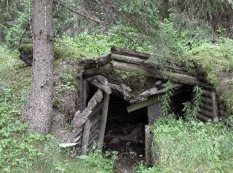
When you visit the region, do be sure to view this unique site, some 25 miles southwest of Vilnius, in the Rudninkai Forest (famous in Holocaust memoirs and lore by its Yiddish name, der Rudnitsker vald). A number of Holocaust Survivors refer to the fort as der Rudnitsker fort. In English, the phrase ‘Jewish partisan fort’ has become a shibboleth of competence. If your guide in Lithuania knows his or her stuff, you'll be taken there without delay. If you get the ‘It’s only woods, nothing there’ spiel, you'll know where that is coming from...
Please contact Samuel Gruber for more information on how to participate in the international campaign to save Lithuania’s last Jewish fort.

Fania Yocheles during her time incarcerated, in her own city, in the Vilna Ghetto, along with tens of thousands of other Jewish residents (Sept 1941 — Sept 1943). She was one of the very few survivors.
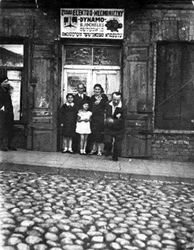
In happier times, outside her parents’ shop on Zavalna (now Pylimo) in 1932 or 1933. From left: Fania; younger sister Rivele; their parents: Benyomen Yocheles, a teacher at Vilna’s Jewish Technical College and owner of the electrical workshop in the background; Rokhl Galunsky-Yocheles. Using a time-delay device, the photographer (far right, name unknown) jumped into the picture. Fania is the only one in the image to have survived the Holocaust. She fled the ghetto just before its destruction and joined a unit of Jewish partisans in the forest. She frequently takes visitors and students to the site of the Jewish partisan fort where she lived and fought from September 1943 until July 1944. The remnants of the fort are in danger of imminent disappearance.

Updates
On 28 April 2010, the U.S. president’s Special Envoy to Monitor and Combat Antisemitism, Hannah S. Rosenthal, visited the Jewish Partisan Fort, guided by its one surviving veteran in Lithuania, Fania Yocheles Brantsovsky, librarian of the Vilnius Yiddish Institute. The visit was coordinated by the U.S. Embassy's Timothy O’Connor, and included this website's editor, who provided translation for Ms Brantsovsky. During the excursion, Ms Rosenthal expressed the hope that the Lithuanian government would take action to preserve the site as one that is vital to Holocaust education and the honoring of Jewish resistance against Nazi tyranny.
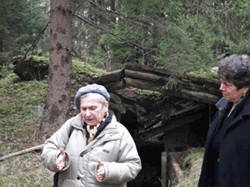
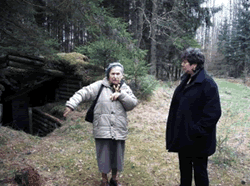
http://www.holocaustinthebaltics.com/388223.html